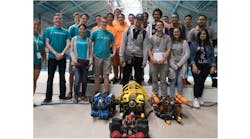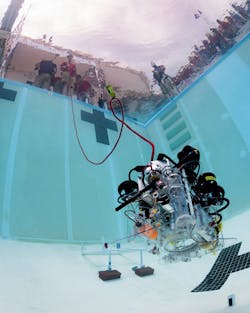In an effort to attract students to the world of STEM, companies are becoming quite creative.
One such effort, The MATE ROV Competition, caught the eye of Motorola which provided $30,000 toward the competition.
The MATE ROV Competition requires students to brainstorm and engineer solutions to problems based on real-world scenarios, from monitoring water quality to maintain healthy waterways to ensuring public safety.
The competition challenges students from K through 12, community colleges and universities throughout four levels (EXPLORER, RANGER, NAVIGATOR and SCOUT) to design, build and test underwater robots to complete specified, simulated, real-life missions. Students also must organize themselves into mock companies, which encourages them to develop entrepreneurial thinking, innovate and work together to essentially manufacture, market and sell their product (a.k.a. the ROV). The competition consists of a network of more than 30 regional contests that take place around the world each spring with the winning teams advancing to the international championship.
The 2019 MATE International ROV Competition, June 20-22, is expected to bring together more than 1,000 students as they descend in Kingsport, Tenn.
“We've seen how transformative the MATE ROV Competition can be and how it can have a long-term, positive impact on students' education and careers,” explains Jill Zande, president of MATE II. “The funding from Motorola Solutions Foundation will allow us to engage students who might not otherwise have access to opportunities like this.”
MATE II, the nonprofit organization that puts on the competition, targets underrepresented populations in specific locations in Alabama, Illinois, Florida, Georgia, Maryland and Washington with the goal of providing resources to get them involved in the competition and expose them to careers that they might not have otherwise considered.
This population is of interest to Motorola who this year will provide grants to support programs that have a specific focus on providing grants to programs that impact underrepresented populations, including females, minorities, people with disabilities, veterans and others. Their support will help more than three million students, teachers, first responders and community members around the globe.





